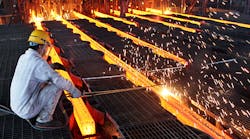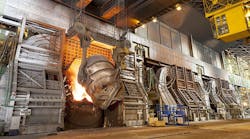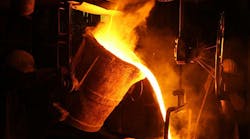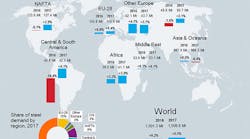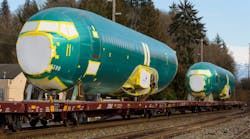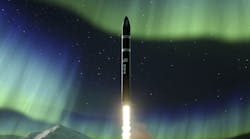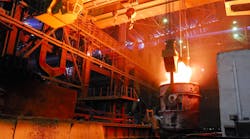A new short-term forecast sees global steel demand totaling 1.535 billion metric tons during 2017, up 1.3% year-on-year, following a 1.0% rise during 2016. The study conducted by the World Steel Assn. also predicts a 0.9% increase in demand to 1.548 billion metric tons in 2018.
World Steel issues its semi-annual Short Range Outlook for steel demand for 67 countries, identifying factors in industrial markets and regional economies that shape the demand for steel.
“In 2016, steel demand recovery was stronger than expected with the upside mostly coming from China,” according to T.V. Narendran, chairman of the World Steel Economics Committee. “We believe in 2017 and 2018 we will see a cyclical upturn in steel demand with a continuing recovery in the developed economies, and an accelerating growth momentum in the emerging and developing economies.
Narendran offered a cautious note about the future direction of such markets. “We expect that Russia and Brazil will finally move out of their recessions. However, China, which accounts for 45% of global steel demand, is expected to return to a more subdued growth rate after its recent short uplift. For this reason, overall growth momentum will remain modest,” he said.
While concern for economic recession is receding in most regions, political developments are creating concern for investors, including “U.S. policy uncertainties, Brexit, (and) the rising populist wave in current European elections.”
World Steel sees furthers risks as nations “retreat from globalization and free trade under the pressure of rising nationalism.”
More positively, the current Short Range Outlook sees decreasing risks from conflicts in the Middle East and in Eastern Ukraine.
There is also a risk to rising steel demand from the expected U.S. Federal Reserve Bank interest rate increase, and any appreciation of the U.S. dollar: such developments may result in capital outflows from emerging economies, and pressuring corporate debt in developing countries.
In terms of industrial demand, crude oil prices are expected to show a moderate gain in 2017-18, which the Outlook finds may stimulate investment in oil-and-gas sectors worldwide.
Automaking has been the best-performing consumer market for steel products in recent years, but this trend may be nearing a peak as automotive products demand is leveling off.
The construction, building, and infrastructure sector accounts for 50% of global steel use, and has been a major driver for steel demand in developing countries. Now, it appears that there is a recovery in construction-related steel demand in the EU, and potential for recovery in the U.S. related to new investments in infrastructure projects.
In regional markets, China’s steel demand grew 1.3% in 2016, and while Chinese steel demand remains strong in the early part of this year it is expected to decelerate gradually as the government tightens its real-estate policies. China’s steel demand is forecast to remain flat in 2017, and then decline by 2% in 2018.
U.S. economic fundamentals remain strong, and the United States is expected to continue to lead growth in the developed world in 2017-18. However, despite recovering oil prices, a rebound of investments in oil-and-gas may be limited.
In the EU, monetary policy is expected to remain steady, and fiscal tightening is not expected, so the risk of disinflation has receded. If EU political stability can be maintained, the forecast concluded, investment is expected to provide a further boost to the recovery.
Overall steel demand in developed economies is forecast to increase by 0.7 % in 2017 and 1.2 % in 2018.
In the developing economies, Russia and Brazil are stabilizing and expected to show modest growth in 2017; Russian growth will continue in 2018 as structural reforms take more effect.
The Indian economy is expected to resume growth, though at a weaker rate. The ASEAN countries will show solid growth in 2017-18, but, the region remains vulnerable to currency volatility associated with U.S. interest rate hikes and dollar appreciation.
Steel demand in the emerging and developing economies (excluding China) is expected to grow by 4.0% in 2017, and then by 4.9% in 2018.
